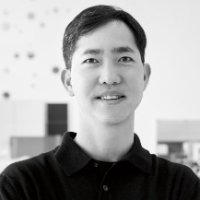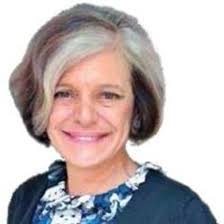4+1 Interview with Andrew Kim

I'm pleased to announced the return of the 4+1 Interview, which used to be a standard feature at this blog back in its days at the Chronicle of Higher Education. In these interviews, I connect with an interesting person who has something to say about mathematics, education, technology or all of the above, and that person gets four questions to answer, plus a special bonus question at the end.
Today's guest is Andrew Kim, manager of the WorkSpace Futures group at Steelcase. Andrew has been a major part of my sabbatical this year. Our relationship goes back to 2012, when I found him while doing research on interactive whiteboards (Steelcase has a line of these), and we quickly discovered our mutual connection to teaching, learning, and technology --- although we approach these subjects from different viewpoints.
Could you explain to readers what exactly Workspace Futures is, and what it does?
The WorkSpace Futures group is an internal research and innovation group for Steelcase, a global firm that provides architecture, furniture and technology for office, healthcare, and education environments. One way to think about the WorkSpace Futures group is that we are tasked with thinking about the future of work, learning, and healthcare experiences.
Our group is a multi-disciplinary team. We have individuals with various backgrounds including design, social science and engineering. As a global team, we have research nodes in the US, Europe and Asia.
We look at broad themes, which could either be cross-industry topics or areas specific to a particular market. Cross-industry topics that we study include collaboration, virtual and augmented reality, and creativity. A few topics that we look at within education include active learning classrooms, future of lecture halls, and makerspaces.
What's your academic or professional background, and how did you come to get involved with Steelcase and Workspace Futures?
My background is fairly varied. I have a liberal arts undergraduate degree. After college, I was deciding between a health professional or a design related career path. I ended up going down a design and technology path. I eventually moved to California and was a consultant at an interactive agency that helped to developed websites, e-commerce sites and intranets for corporations. I was part of the user experience team.
Later, I had an entrepreneurial itch. I left consulting to helped start an online learning company that was based in South Korea. I served as a technology lead for the company. I enjoyed the experience a great deal. It was exciting to help build a company that started out as an idea on paper.
After being with the online learning company for four years, I knew it was time for me to move on. I was always interested in studying design and looked at several graduate design programs both in the US and Europe. I chose a human-centered design and innovation planning program in Chicago. My graduate studies provided me with tools to build empathy for users and to develop my innovation skills. Upon graduation, I was looking for a position that would complement my previous work experiences. Since I had worked as a consultant and at a start-up, I was interested in working in-house for a larger organization. As well, I had mostly been in the world of digital pixels and was keen on joining a company that manufactured tangible artifacts. With that in mind I joined Steelcase, specifically the WorkSpace Futures team.
A lot of people know Steelcase as just a furniture company, and don't have a sense of just how involved with education Steelcase actually is. What are some of the ways that Steelcase Education and Workspace Futures works with education, and do you have any favorite success stories?
Steelcase Education is passionate about supporting student success and engaged learning experiences through a space lens. With that in mind, we work closely with education institutions in various ways. Our research and product development activities involve understanding deeply our users – students, educators, administrators, etc. We’re often visiting campuses, interviewing users, and engaging them in participatory workshops. As well, we collaborate with universities on research. We’ve collaborated with universities on topics that range from augmented reality to teacher mindset. Steelcase Education also supports a grant program. The Active Learning Center Grant is a grant that we have been offering every year to schools to support their active learning initiatives.
A favorite success story is the development of our Node classroom chair. The Node chair created a new product category, but what excites me is how it provides educators with greater choice and control in the classroom while at the same time also helping students to be more engaged in learning. It’s rewarding to hear students share feedback that is more on the emotional level. It’s especially gratifying to hear stories from schools such as Saluda Middle School, more than three quarters whose students receive free and reduced lunches, share the impact of active learning in their classrooms with the Node chair. When students use a classroom with our chairs, they share that they feel like the school cares about them.
What's one major challenge that Workspace Futures is wrestling with right now?
One key question we’re asking ourselves is how the nature of face-to-face learning experiences are changing. Some broad changes were seeing is that learning is becoming more about knowing and doing. The knowledge component of learning has traditionally had a lot of emphasis within the factory model era of education. There is now renewed interest in the doing part of learning. Examples of this include makerspaces, project based learning, and service based learning. In a similar vein, we’re also seeing face to face learning experiences move towards higher cognitive modes such as application, synthesis and creativity versus passive learning. The rise of blended learning, particularly, flipped classrooms, is contributing towards this shift to higher cognitive thinking on campuses. In addition, face to face learning experiences on campuses are becoming more tailored or personalized. When I think of tailored, in-person experiences, I’m reminded of silent disco experiences, which are an interesting emerging trend. (You can read more about silent discos in this New York Times article.) Silent discos are dance experiences that have multiple dj’s. The dance party attendees are given wireless headsets, and they have the option of selecting one of the dj’s. The wireless headset light matches the dj’s colored light. The experience is both social yet also individualized. I wonder if future campuses will be a combination of spaces supporting highly tailored experiences along with social and creative spaces.
+1 What question should I have asked you in this interview?
What is a specific technology trend that you are tracking?
AI (artificial intelligence) is a technology trend we’re tracking. A question that we’re thinking about currently and that many other organizations are thinking about is how AI will impact the nature of work. Consumer AI adoption is accelerating with products such as Amazon’s Alexa and Google’s Home products. We’re now seeing schools beginning to place Amazon Alexa in classrooms and schools libraries. Physicians are using AI to help read through thousands of medical journals and suggest diagnoses. Companies such as Cisco and Voicera are introducing AI into meeting experiences.
The AI story I often share is about free style chess tournaments, which involve both computers and humans in any kind of combination. (You can learn more about one of these free style chess tournaments by reading the article, The Chess Master and the Computer.) The winner of the tournament was a team of humans with computers, but it wasn't the grandmaster with the state-of-the-art computer. A pair of amateurs with three computers won. The story shows that there is not only hope for humans but also that process matters. The future of collaboration will not only depend on how we collaborate with other humans but also how we collaborate with computers.

